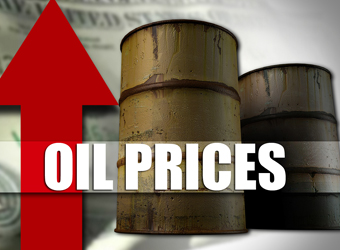Oil prices rose after a strong U.S. jobs report bolstered hopes for growing energy demand, but crude posted a small weekly decline, pressured by rising OPEC exports and strong output from the United States.
U.S. employers hired more workers than expected in July and raised their wages, the Labor Department reported.
U.S. West Texas Intermediate (WTI) crude futures finished Friday’s session up 55 cents, or 1.1 percent, to $49.58 per barrel. Brent crude futures, the international benchmark for oil prices, were up 20 cents at $52.21 a barrel at 2:02 p.m. ET (1802 GMT).
“Oil prices were supported by good news this morning on the U.S. jobs front,” said Andrew Lipow, president of Lipow Oil Associates in Houston, noting gasoline and diesel demand also remained strong.
Oil futures held their gains after Baker Hughes reported its weekly count of oil rigs operating in the United States fell for the second week in three. The count ticked down by 1 oil rig to 765.
Crude futures had been lower in early trade before the jobs report spurred buying. For the week, the Brent and WTI front-months were both down. Analysts said prices were pressured by rising output, although strong demand limited the losses.
“Increasing OPEC production and increasing OPEC exports are the reason the market has been trading lower,” PVM Oil Associates analyst Tamas Varga said.
Barclays bank said: “we expect a downward price correction during this quarter,” but forecasts Brent at an average of $54 per barrel during the fourth quarter.
While the Organization of the Petroleum Exporting Countries is leading cuts of 1.8 million bpd along with some non-members such as Russia, its July exports rose to a record high, according to a report by Thomson Reuters Oil Research.
July’s exports of 26.11 million barrels per day (bpd) was a rise of 370,000 bpd, with most coming from Nigeria.
A Reuters survey also showed OPEC oil output at 2017 highs in July, led by Libyan gains. Both Libya and Nigeria were exempt from OPEC’s output cut deal.
Output in Russia is also high. Russia’s largest oil producer Rosneft said its crude oil output grew by 11.1 percent year-on-year in the second quarter.
Officials from an OPEC and non-OPEC technical committee will meet in Abu Dhabi on Aug. 7-8 to discuss ways to boost compliance with their supply reduction agreement.
In the United States, oil production has hit 9.43 million bpd, the highest since August 2015 and up 12 percent from its most recent low in June last year.
Prices were around 18 percent above the lows hit in June, as strong summer demand for transport fuel has buoyed benchmark contracts.
U.S. gasoline demand rose to a record 9.842 million bpd last week, according to government data this week.
“Gasoline demand is now +0.1 percent (year-on-year). This is reasonably encouraging given it had been flat or negative since late November 2016,” U.S. investment bank Jefferies said.
Source: Reuters


